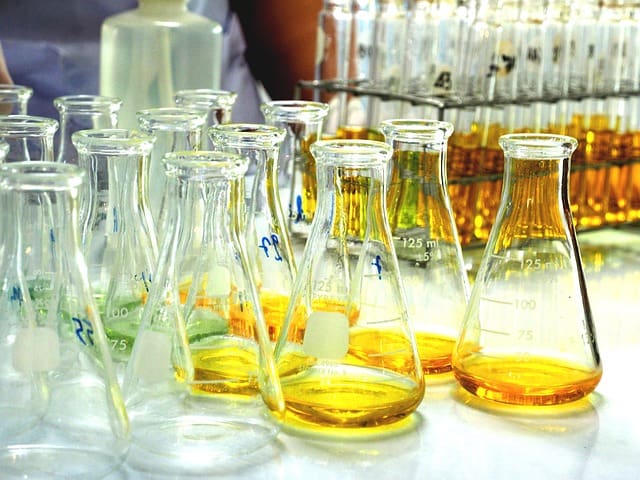5 Ways to Safely Do Science Experiments at Home

Does your child love science? Are they itching to perform experiments and discover how to become a science superstar…or an evil genius bent on world domination? Either way, doing science experiments at home is fun and educational for kids. But how do you prepare your home properly for safe science fun?
As a school assembly presenter in New Jersey, I’ve delivered amazing and interactive school assembly programs to students for over ten years. I’m Michael Kirschner and each month I write articles like this to help busy parents and school administrators.
Setting up a proper laboratory at home is exciting and fun for students. It’s an easy way to get them excited about science by doing their own science experiments. This article reveals five simple ways to prepare your home for your budding evil genius.
How to Do Science Experiments at Home Tip #1: A Designated Location
The first step is simple but critically important. Where is your young scientist going to conduct their crazy experiments? After all, they need a safe space to blow stuff up…without contaminating food or burning the fur off the family dog.
Ideally, your child’s lab would be in a spot where a bit of a mess wouldn’t matter. A garage, basement family room, or outdoor spot are ideal. Before turning your youngster loose, you’ll want to remove breakables and hide that important family heirloom.
How to Do Science Experiments at Home Tip #2: Set Ground Rules for Safety
Next, set some ground rules. First, no science without adult supervision. This is for your child’s safety as well as your sanity. Even relatively safe experiments like Diet Coke & Mentos can cause quite a mess if you’re not careful. Second, they should follow the lead of other scientists from books or approved online videos that you screen first.
In other words, your child shouldn’t be permitted to mix stuff ‘just to see what happens.’ Even simple and safe household chemicals can cause trouble if the wrong items are mixed together.
Finally, your child should know that whatever mess they create they will be expected to clean up. Hopefully, this will make them reconsider recreating the Elephant Toothpaste experiment they saw that filled up a house!
How to Do Science Experiments at Home Tip #3: Safety First
This is a biggie! You’ll want to review all safety protocols with your child. Sit down with them and go over the material for the experiment. Your child may have read about an experiment in a book or seen something fun on YouTube. But they may have skipped the safety part.
Talk to your child. Make sure they have a clear understanding of how to stay safe during the experiment. Go over the expectations of the experiment. Yes, they may be looking for a fun result, but any science experiment can go wrong.
Additionally, be sure to stock your child’s lab with safety equipment, Safety goggles are just a start. Clear face masks, oven mitts, and anything else the experiment’s authors recommend should be considered mandatory. Don’t forget the cleaning supplies, too!
How to Do Science Experiments at Home Tip #4: Lighting & Ventilation
It’s not enough to have a spot on your property where your child can feel free to make a mess. Depending on the experiments your child may be doing, ventilation may be an important component. Caustic fumes could result in trouble breathing, irritation to the eyes, and much more.
If needed, switch locations. If your child typically does safe experiments in your basement, you’ll want to relocate your child for experiments involving ammonia or other chemicals where proper air circulation is a must.
Don’t forget good lighting. Your child will want to see the fruits of their labor. But good lighting is key to getting accurate measurements, monitoring for safety, and much more. If your preferred lab location doesn’t have bright lights, change it. Either get better lighting or change locations.
How to Do Science Experiments at Home Tip #5: Stock Your Lab
Before heading to the lab to create experiments, sit down with your child. Look at the experiments they are interested in conducting. Create your supplies shipping list. Safely store the supplies somewhere in the lab. Be sure pets and small children can’t get into your supplies.
Keeping supplies in the lab reduces the risk of your child making a mess on their own as they run through, looking for ‘that last ingredient.’
Get Your School Jazzed for Science!
Want to get your child’s entire school excited about STEM? My “Supermarket Science” assembly program gets up to a DOZEN students on stage. With plenty of crazy experiments and wacky fun, your school’s children will leave the assembly excited eager to dive into more science! Contact me today for more details.
